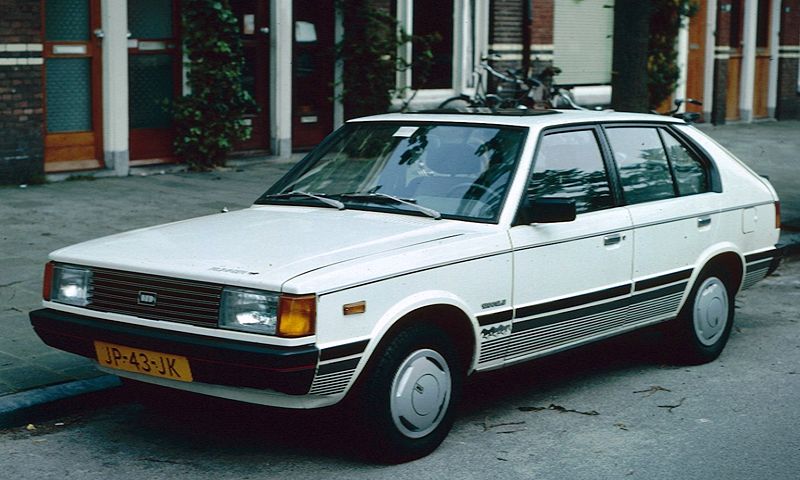
Filed Under: News
Do you realise the Hyundai Pony is now a classic, it was first produced in 1975 though it took a three year gap to arrive in the UK.
Hyundai is one of those conglomerate companies that make a bewildering number of items, suddenly they decided to make a Korean car, so they got George Turnball from Leyland, Mitsubishi and Ford for parts and then Girling and Burman in the Uk for more bits.
The design was Italian Giugiaro of Italdesign, well George Turnball was behind the Marina and Ital, probably wasn’t his fault they fell to pieces, hasn’t it happened to so many “bread and Butter” cars, delving into the past is revealing that all that glitters is not necessarily gold.
Onward, Mitsubishi designed engine you either got a 1238cc or 1439cc unit they pushed out 80 or with the later 92bhp, Stromberg Carbs fitted, 2 choke variety, the gearbox again was Mitsubishi as was the rear axle.
Surprisingly top speed was in the region of 92 to 97 mph and petrol consumption 30 -38 mpg, not bad for a four door family car in 1979, to stop they had front disc’s and rear drums, the ride would have been standard with independent front coils and semi elliptic springs at the rear.
On paper at least this seems a good buy, in reality though the body panels were wafer thin and would easily dent, but there again the market trend was this way so perhaps it is a bit unkind to comment.
Within two years a Pony 11 was launched, before going into this area Hyundai is now the fourth largest car maker in the world, with Nissan, Toyota and Honda leading the way,
Whilst I think it is important to acknowledge the cars that have come into the classic domain it does not necessarily make interesting copy, One of the problems is that cars in the main are world cars unfortunately different countries demand differing set up’s, the Pony was at one stage Canada’s top selling car, but you couldn’t buy it in the United States as it had not passed the emission standard, the Canadian version differed slightly from the European model.
January 1982 saw the rejuvenated Pony 11, apparently the sales brochure had the following incentives to encourage buyers, “new luxury rectangular halogen headlights, fitted to a smart new radiator grill, wrap round indicators and re-styled rear lamp clusters, neatly designed instrument panel and easy to read gauges, well does that mean the original car had a pigs ear of a dashboard and difficult to understand gauges?
1984 saw a 1439cc engine, 4/5 speed manual gearbox or 3 speed auto, there was a 1206cc engine, 1985 the door handles were blacked out and the wipers lost the chrome plating, however a chrome Hyundai badge appeared.
Also in 1985 a 1.6 engine with a hemispherical cross flow cylinder head with 2 valves per cylinder and a chain driven SOHC a two barrel downdraft carb fitted and the ignition was breaker point.
Between 1984 and 1986 there was three trim levels L standard, which gave vinyl seats, fold down rear bench, 4 speed manual gearbox and a 1.4 engine, now if that didn’t satisfy you there was the GL stood for de luxe, for the extra a clock came as standard, a rear wiper, passenger side mirror, tinted glass, lockable fuel door and standard door guards and last but not least a 1.6 engine, if you were even more fussy the GLS which stood for Glorious gave you all of the GL bits plus a tachometer, passenger vanity mirror 50/50 fold down rear seats and 1.6 engine.
I rather suspect tracking down a secondhand pony is going to be difficult, again there is no mention of safety factors, you get what you pay for, with European cars they at least have character, I did forget to mention that Hyundai did not do their homework very well in Canada as the severe Canadian winter played havoc with the car freezing up, I can remember my aunt who lived on the Great Lakes at Slt St Marie that they had engine warmers.
 .
.
Gordon Bashford, well I found by chance more info on the man, he joined Rover straight from school in 1930 and retired in 1981 and died 1991, what’s more our Gordon had a hand in designing the P1 and a car called the scarab, he also designed the layout for the Land Rover helped with the P5 and P6 and P6BS and P8 prototypes, the Gas Turbine, the Range Rover and the SDI.
In addition he gave advice on automotive problems for other companies.
Obviously when we come back to Rover, Gordon will be mentioned again until then “Thank you”
Ted Lay tedlay@gmail.com